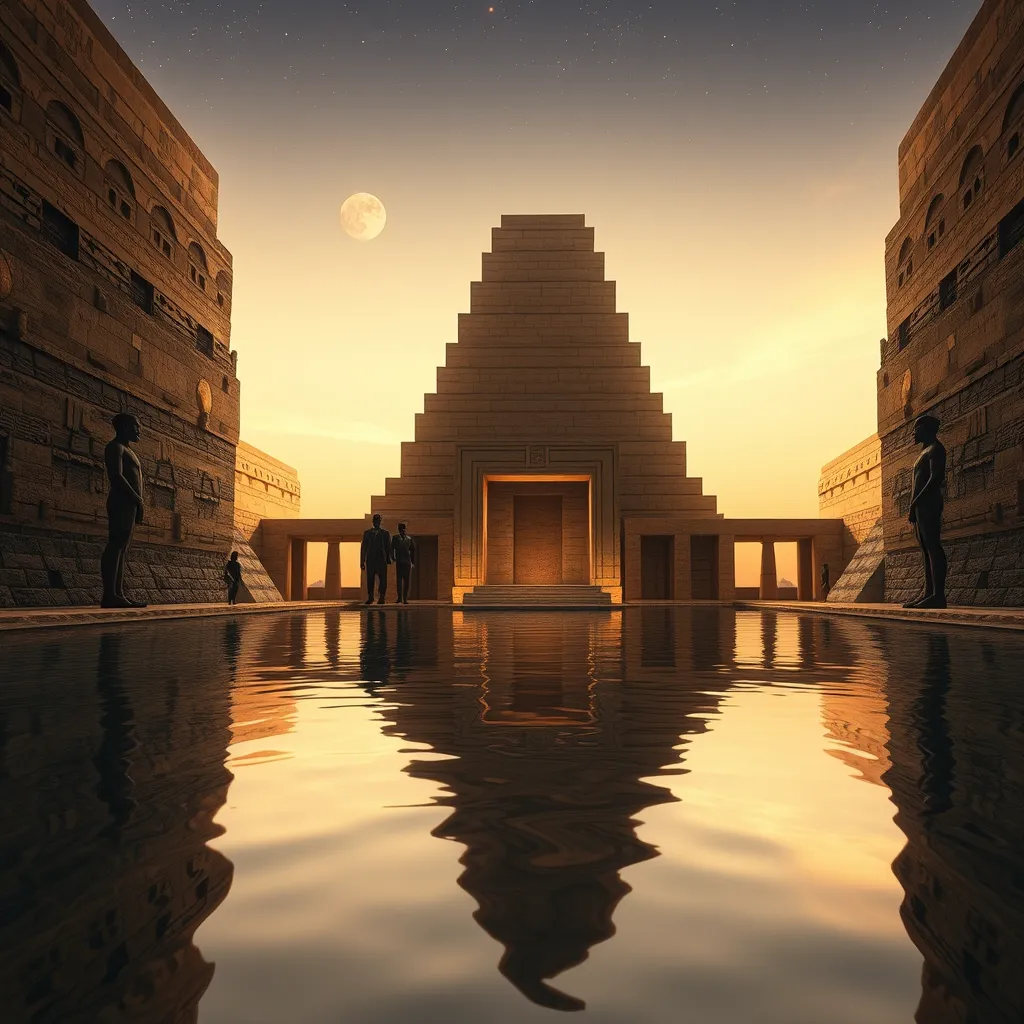The Duat: A Reflection of the Human Condition
I. Introduction
The Duat, often referred to as the Egyptian underworld, occupies a central place in ancient Egyptian belief systems. It is more than just a realm of the dead; it serves as a profound symbol of the human experience, encapsulating our fears, aspirations, and the inevitable nature of mortality.
Understanding the Duat is crucial for grasping how ancient Egyptians viewed human existence and the afterlife. It reflects their beliefs about the journey beyond death, the challenges that await, and the potential for transformation.
This article will explore the various aspects of the Duat, focusing on its symbolic significance as a metaphor for the human condition. By examining its historical context, structure, and themes, we aim to uncover insights into how ancient beliefs can inform our understanding of life today.
II. Historical Context of the Duat
The concept of the Duat has its origins deeply rooted in ancient Egyptian mythology, evolving over millennia. The Duat was first mentioned in the Pyramid Texts, dating back to the Old Kingdom, where it was described as a complex realm inhabited by gods, spirits, and the souls of the deceased.
Over time, the imagery and significance of the Duat transformed, reflecting changes in religious beliefs and practices. Initially perceived as a dark and perilous place, it gradually became associated with rebirth and renewal, particularly during the New Kingdom.
- Osiris: The god of the afterlife and resurrection, symbolizing the cyclical nature of life and death.
- Isis: Osiris’ wife, representing the themes of motherhood and protection in the afterlife.
- Thoth: The god of wisdom, who played a crucial role in guiding souls through the Duat.
III. The Structure of the Duat
The Duat is often depicted as a multi-layered landscape, filled with various realms that the soul must navigate after death. Each layer presents different challenges and experiences, symbolizing the trials one faces throughout existence.
The features of the Duat are rich in symbolism:
- The Waters of Chaos: Representing the primordial state of existence, these waters symbolize the fear of the unknown.
- The Field of Reeds: A place of peace and plenty, akin to paradise, where the souls of the righteous can find eternal rest.
- The Hall of Judgment: A critical location where the soul’s heart is weighed against the feather of Ma’at, the goddess of truth.
The weighing of the heart is a powerful motif, illustrating the moral implications of one’s life. If the heart is lighter than the feather, the soul is deemed worthy; if heavier, it faces annihilation.
IV. The Journey Through the Duat
The journey through the Duat is not merely a passage but a significant transformation that the soul undergoes after death. This journey is fraught with challenges, including treacherous landscapes, monstrous guardians, and trials that test the soul’s worthiness.
Key obstacles include:
- Serpent Deities: Fearsome creatures that symbolize chaos and the need for courage.
- Darkness: Representing ignorance and the struggles faced in life.
- Judgment: The ultimate test of one’s life choices and ethical conduct.
The parallels between the journey in the Duat and life’s struggles are striking. Just as souls navigate obstacles in the afterlife, individuals encounter trials and tribulations throughout their lives, shaping their character and destiny.
V. Themes of Transformation and Rebirth
Central to the concept of the Duat is the idea of death as a transition rather than an endpoint. This perspective fosters a belief in rebirth, which is not only a physical act but also a spiritual and psychological transformation.
Rebirth in the Duat carries profound implications for understanding human resilience. It symbolizes the capacity for renewal and growth, urging individuals to embrace change and overcome adversity.
In this context, the Duat serves as a metaphor for personal growth and self-discovery, encouraging us to reflect on our life choices and the potential for transformation inherent in every experience.
VI. The Duat and Moral Reflection
The ethical implications of one’s actions during life are vividly portrayed in the Duat. The concept of Ma’at, which embodies truth, justice, and cosmic order, is central to the judgment process.
Key aspects of moral reflection in the Duat include:
- Accountability: The emphasis on personal responsibility for one’s actions.
- Conscience: The internal moral compass that guides decisions and behaviors.
- Legacy: The understanding that one’s life choices resonate beyond death, impacting future generations.
The lessons gleaned from the Duat encourage reflection on ethical behavior and the importance of living a life aligned with principles of truth and justice.
VII. Modern Interpretations of the Duat
The relevance of the Duat extends into contemporary discussions about death and the afterlife. As society grapples with mortality, the themes embodied in the Duat resonate with modern existential questions.
The influence of the Duat can be seen across various forms of literature, art, and popular culture, where its imagery and symbolism continue to inspire creative expression and philosophical exploration.
From a psychological perspective, the Duat reflects human fears and hopes surrounding death, serving as a canvas for exploring our deepest anxieties and aspirations related to existence.
VIII. Conclusion
In summary, the Duat plays a profound role in understanding the human condition, offering valuable insights into our fears, values, and the nature of existence. Its lessons about transformation, moral reflection, and the journey through life’s challenges remain relevant today.
As we reflect on the enduring legacy of the Duat in modern consciousness, we recognize the significance of exploring ancient beliefs to enrich our contemporary lives. By engaging with these timeless themes, we can cultivate a deeper understanding of ourselves and the world around us.




